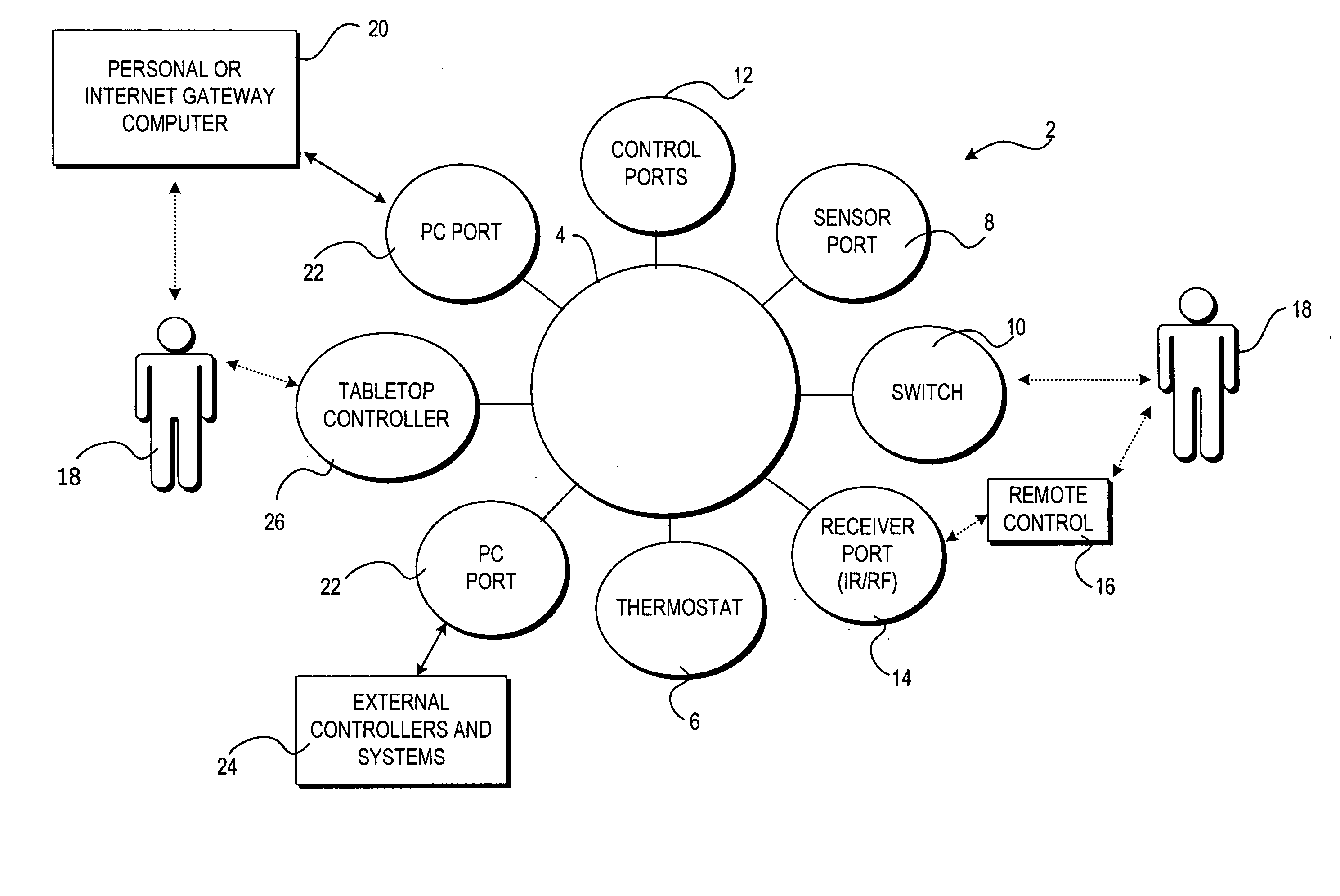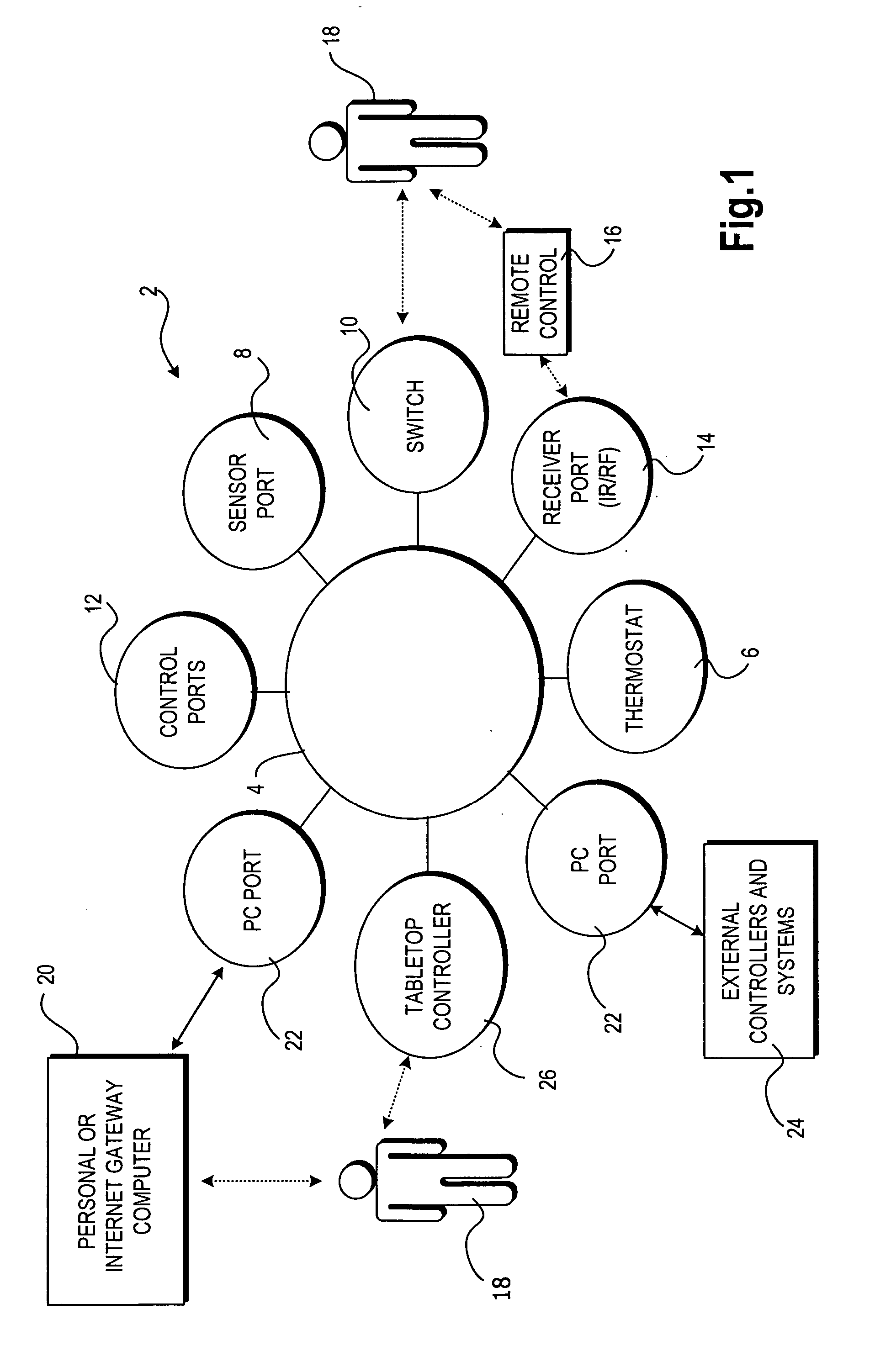Method and apparatus for providing distributed scene programming of a home automation and control system
a control system and distributed programming technology, applied in the field of home automation and control systems, can solve the problems of low local illumination by the reading chair light, the difficulty of creating scenes that include devices set at level values, and the undesirable effect of previously set level in other scene devices, so as to reduce the time and scene programming error rate
- Summary
- Abstract
- Description
- Claims
- Application Information
AI Technical Summary
Benefits of technology
Problems solved by technology
Method used
Image
Examples
Embodiment Construction
[0034] The present invention is directed to a simplified programming interface (SPI) for programming the devices of a home automation and control system. According to an embodiment of the present invention, each device includes control logic for providing an SPI for the device. When multiple devices are included in a home automation and control system, the SPI provides a consistent user interface across the system. Once a user of the home automation and control system understands how to program one scene, the user can easily program all other desired scenes in the system by following generally the same procedure.
[0035] Referring now to the figures, in which like numerals represent like elements, an actual embodiment of the present invention will be described. FIG. 1 provides an overview of an illustrative home automation and control system 2 in which aspects of the present invention may be practiced. It should be appreciated that the use of the term “home automation and control” in...
PUM
 Login to View More
Login to View More Abstract
Description
Claims
Application Information
 Login to View More
Login to View More - R&D
- Intellectual Property
- Life Sciences
- Materials
- Tech Scout
- Unparalleled Data Quality
- Higher Quality Content
- 60% Fewer Hallucinations
Browse by: Latest US Patents, China's latest patents, Technical Efficacy Thesaurus, Application Domain, Technology Topic, Popular Technical Reports.
© 2025 PatSnap. All rights reserved.Legal|Privacy policy|Modern Slavery Act Transparency Statement|Sitemap|About US| Contact US: help@patsnap.com



